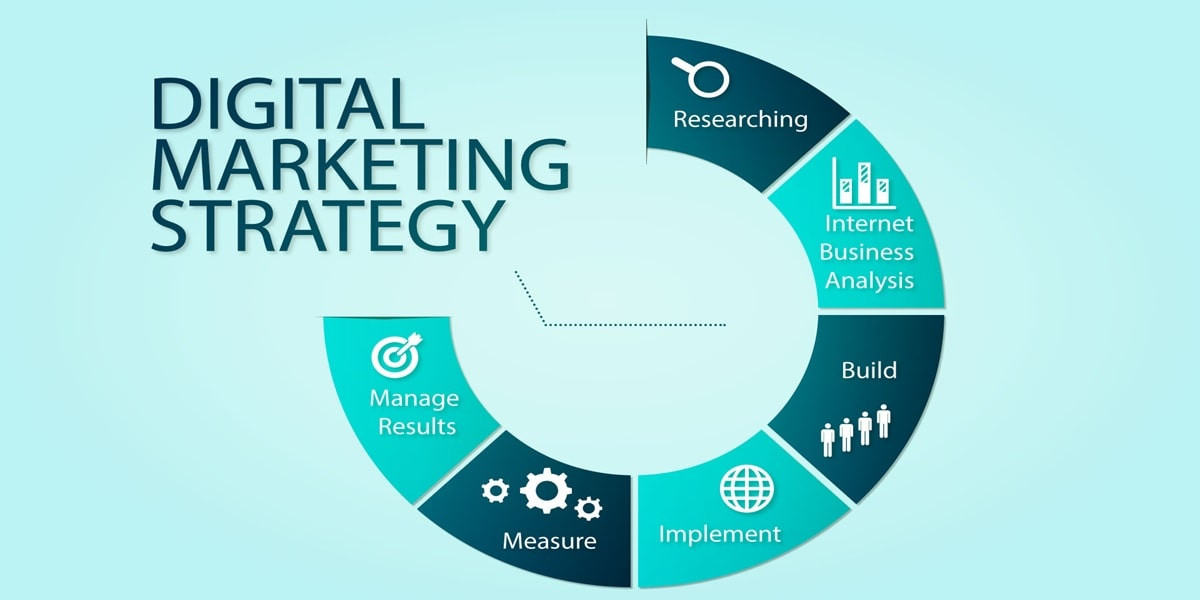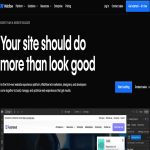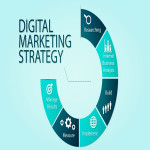Are you an entrepreneur with a webshop? Or do you have an
idea for building and operating one? If so, keep reading. How can you
ensure that your efforts truly pay off? In this blog, we will address these
questions from an online marketing perspective.
Online Marketing Funnel for Webshops
First and foremost, it is crucial to recognize that customer
journeys can vary significantly. For instance, Customer A may
already be searching for a specific product, look it up on Google, and then
place an order at a suitable webshop. Meanwhile, Customer B may
come across an advertisement while casually browsing social media, get
inspired, start researching, and eventually make a purchase. There are
countless "conversion paths" to consider.
Google’s See, Think, Do, Care model is a widely recognized
framework for understanding customer journeys. Every online marketing funnel
can be divided into these four phases, which also apply to webshops and
e-commerce businesses. Refer to the image below for a visual representation.
For each sector, the structure of an online marketing funnel
differs. It is essential to thoroughly analyze your webshop's potential
customer journeys and tailor high-quality content accordingly.
Online Marketing Tactics to Promote Your Webshop
At Times IT, we have developed a
blueprint for the average webshop’s content strategy, based on the See,
Think, Do, Care model. Since every business and sector is unique, it is
important to customize this framework to suit your specific needs.
As shown in our blueprint, success depends on a strategic
implementation of online marketing channels to generate traffic and
drive sales. Additionally, we have incorporated key insights and provided tips
for differentiation. Below, we will explain each topic in detail.
The Importance of the Do Phase for Webshops
For many webshops, the Do phase plays a
crucial role. This is the stage where the first purchase typically occurs. Why
is this so significant? A considerable percentage of webshop sales come
from short conversion paths. For example, search engines often
drive a large portion of sales, as users entering specific search queries are
already close to making a purchase. Similarly, impulse purchases are
frequently triggered via social media, where latent needs can quickly transform
into buying decisions.
Search Engine Marketing for Webshops
In the USA, the majority of product searches
begin on Google. When a user enters a search query, it signals
intent to purchase a particular product. As a webshop owner, you must optimize
your visibility by appearing prominently in search results—a strategy known
as pull marketing. This type of traffic is highly relevant and
typically results in higher conversion rates.
Maximizing search engine marketing involves leveraging Google
Shopping, Google Text Ads, and SEO. In addition to Google, consider
platforms like Bing Ads and price comparison websites. Channels
such as Google Shopping and price comparison sites fall under feed-based
marketing channels.
Pull marketing channels often generate the majority of
webshop sales, making it crucial to optimize each channel effectively. Work
with a Google Ads (SEA) specialist and ensure your website
complies with all SEO best practices.
Social Media Advertising for Webshops
Within the Do phase, social media advertising
plays a vital role, particularly through campaigns optimized for purchases.
There are two primary types:
- Remarketing
Campaigns:
- Target
people who have already interacted with your brand, including previous
website visitors, past customers, newsletter subscribers, or those who
engaged with your social media content.
- Deliver
highly relevant ads to encourage conversions.
- Ensure
that your campaign targets only users who haven’t made a recent purchase.
- Prospecting
Campaigns:
- Target
new audiences who haven’t previously interacted with your webshop.
- Focus
on relevant demographics, such as lookalike audiences of past
buyers or individuals interested in your product category.
- If
no immediate purchase occurs, use remarketing campaigns to
re-engage potential customers.
Which Social Media Platforms Should You Use?
Your choice of platform depends on your product and
target audience. Generally, Meta Ads (Facebook and Instagram) are
indispensable for e-commerce sales. However, other platforms such as Pinterest
and TikTok can also be highly effective.
Selling via Marketplaces
Marketplaces such as Amazon and Bol.com are
key sales channels. In the USA, Bol.com is a popular starting
point for online purchases, offering strong brand recognition, a
well-functioning webshop, excellent customer service, and thousands of daily
visitors.
As a webshop owner, you can leverage these advantages by
selling your products on Bol.com through an API/feed-based
integration. The platform charges a commission per sale.
On an international scale, Amazon is the
leading marketplace for product sales. Through Amazon’s platform,
you can easily reach customers across major European countries,
enabling rapid scaling. However, due to commission structures,
profit margins may be lower, so careful cost calculations are essential.
Consider sales via marketplaces as a tool for acquiring new customers,
who may later purchase directly from your webshop.
Performance Marketing: Maximizing Profitability
In the Do phase, the ultimate goal is to generate
a higher profit margin than your marketing expenses. This requires
meticulous control over cost-benefit ratios to ensure
sustainable growth.
Key Performance Indicators (KPIs):
- CPA
(Cost Per Acquisition): Determine a maximum cost per conversion.
- ROAS
(Return on Ad Spend): Set a minimum return on advertising
investments.
By implementing these principles, also known as performance
marketing, you can ensure that your webshop grows profitably and
sustainably.
Webshop Marketing Tactics Beyond the Do Phase
Now that we’ve covered key tactics for generating sales, let’s explore the other stages of the See, Think, Do, Care model:
See Phase for Webshops
High brand awareness can significantly boost webshop sales.
Why? Because people who are already familiar with your shop are more likely to
convert (make a purchase) in the Do phase. Additionally, such
campaigns help populate your remarketing funnel, keeping potential
customers engaged from introduction to sale. Effective channels for this phase
include:
- Brand
awareness campaigns on social media
- Organic
social media posts
- YouTube
videos
- Display
marketing
Key Performance Indicators (KPIs) for the See Phase:
- Number
of people reached
- Number
of impressions
- CPM (cost
per thousand impressions)
- CTR (click-through
rate) and engagement rates
- Number
of video views
Since many webshops lack the scale to invest heavily in the
See phase, the recommendation is to proceed with caution.
Maintaining organic social media activity is always beneficial, but paid
brand awareness campaigns may not be essential for every webshop
strategy.
Think Phase for Webshops
Like the See phase, the Think phase does
not directly drive purchases or high conversion values. Instead, it focuses on
generating website traffic and further populating the online
marketing funnel. The most effective channels include:
- Social
Ads (to drive traffic)
- Google
Discovery Ads
- Product-related
blogs
- Influencer
marketing
In this phase, marketing efforts focus less on immediate
sales and more on increasing awareness and interest in product
categories. Since purchase intent is still relatively low, Think-phase
marketing aims to gradually nurture potential buyers. However, be
mindful of budgeting—while the Do-phase budget is crucial, the
Think phase should be seen as a supportive layer rather than a
primary focus. Businesses with sufficient scale often see success using these
tactics.
Care Phase for Webshops
There are two primary reasons for a webshop to invest in
the Care phase:
- Repeat
Purchases – Customers who have previously purchased from your
webshop are easier to convert again compared to acquiring new customers.
- Fanbase
Marketing – Ideally, your customers will become loyal brand
advocates, recommending your webshop to others and making repeat purchases
themselves.
However, for these benefits to materialize, your webshop
must deliver on its promises—ensuring product quality,
reliable service, smooth delivery, and hassle-free returns. Only when the
overall buying experience is exceptional can you effectively leverage this
phase.
Tactics for Customer Retention
To maintain engagement with existing customers, consider:
- Remarketing
campaigns (targeting past buyers)
- Email
marketing (offering exclusive deals, updates, and reminders)
- Organic
social media interactions (keeping customers engaged
post-purchase)
Optimizing Your Webshop’s Conversion Rate
While the blueprint above focuses on online marketing channels, we must also consider the conversion rate of your webshop. A widely used benchmark for webshops is a 1% conversion rate, meaning that 1% of visitors complete a purchase. CRO (Conversion Rate Optimization) aims to maximize this percentage.
Why Conversion Rate Matters:
To illustrate the impact of CRO, let's compare two
scenarios:
Calculation Example 1: 1% Conversion Rate
- Website
visitors from Google Shopping: 1,000
- Cost
per visitor (CPC): $0.50
- Total
cost of traffic: $500
- Conversion
rate: 1%
- Number
of sales: 10
- Average
order value: $75
- Total
sales revenue: $750
- Profit
margin: $250
Calculation Example 2: 2% Conversion Rate
- Website
visitors from Google Shopping: 1,000
- Cost
per visitor (CPC): $0.50
- Total
cost of traffic: $500
- Conversion
rate: 2%
- Number
of sales: 20
- Average
order value: $75
- Total
sales revenue: $1,500
- Profit
margin: $1,000
In Example 1, the webshop may struggle to turn a profit due to additional costs like shipping and fulfillment. However, Example 2, with a doubled conversion rate, significantly increases profitability—turning 20 sales into a profitable outcome.
Key Takeaway:
Investing in conversion rate optimization can
dramatically improve webshop profitability without necessarily increasing ad
spend. Focus on enhancing user experience, optimizing checkout
processes, and implementing persuasive marketing techniques to improve
conversion rates and overall revenue.
How can I maximize the conversion rate of my webshop?
There are several ways to increase your store's conversion
rate.
Create or Optimize a Webshop
First, ensure that your starting position is strong. This
means having a professional webshop that appears reliable. It should be fast
and user-friendly. Visitors should be able to quickly find what they are
looking for, with no obstacles to completing a purchase. The checkout process
should also be smooth and streamlined.
At Times IT, we still encounter webshops that do not
meet these standards. We advise these (potential) clients to start by improving
their websites. In some cases, we even recommend building an entirely new
webshop. These investments can be recovered many times over if successful. In
short: invest in a high-performing webshop built by specialists. We recently
wrote a case study on outsourcing specialist work.
Improve Your Webshop's Proposition
The most important aspect of your webshop is its overall
proposition and distinctiveness. As mentioned in the blueprint above, acquiring
distinctiveness is crucial. The easiest way to compete is by price (which can
be a good proposition), but the downside is that it may lead to thin margins
and create a race to the bottom with your competition.
Selling unique products can be a very successful strategy.
This ensures that there is no price competition for the same product.
Additionally, excelling in customer service and assisting customers in choosing
between products is a strong strategy (just look at what Coolblue did). Perhaps
you have the most user-friendly webshop? Just make sure you offer real value!
Remarketing Campaigns
Once your website and proposition are in good shape and
there is sufficient demand for your products, sales are likely to
improve—especially if the right online marketing tactics are used effectively.
Remarketing campaigns can further boost the conversion rate of website
visitors. These campaigns come in different forms.
Additional Tips for Managing Your Webshop
- Setting
up a good webshop can take considerable time. Think about enriching
product descriptions, adding images, and setting up well-organized
category pages. If you're not prepared to invest this time into your shop,
be aware that the results may be limited.
- Keeping
your webshop up-to-date and optimizing online marketing tactics is
essential, but it's not the only task. Consider aspects like inventory
management, returns management, customer service, and drafting quotes. Of
course, daily order fulfillment also needs attention. Managing a
successful webshop requires more than just marketing.
- There
is no such thing as making money quickly. Think twice before setting up an
AliExpress dropshipping website. Many online coaches have turned it into a
business model to sell courses. A large percentage of people who attempt
this fail within the first year, incurring substantial losses from
investments in building a webshop and running ads on Google and Meta.
- Trust
and invest in specialists. Have your webshop created by an expert to
maximize your starting position. Outsource your Google Ads, Meta Ads, and
other online marketing tactics to specialists. These experts know how to
help you grow your business sustainably and execute strategies effectively
from the start. This is a smarter approach than spending time and money on
suboptimal performance or expensive courses.
Strategic Partner for Your Webshop
Are you looking for a partner to create a high-quality
webshop? Do you want to grow your webshop sustainably with the help of online
marketing campaigns? Or do you want to start selling on marketplaces such as
Amazon or Bol.com? Times IT helps clients get the most out of their
e-commerce efforts.





